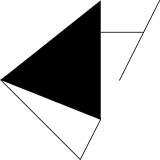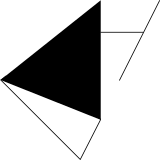Lothar Wolleh opened a photography studio in Düsseldorf in 1962, even before he had completed his studies at the Folkwang School of Design in Essen. Although Wolleh had been working as a photographer for renowned advertising agencies since the early 1960s, it was with his portraits of artists that he made his name. In just under 20 years, he portrayed more than 160 artists, many of them members of the ZERO circle, the international group of artists who established themselves in Düsseldorf in the late 1950s, led by Heinz Mack and Otto Piene. He met Fontana in Düsseldorf in 1963. Their contact quickly intensified. Between 1963 and 1967, Wolleh visited Fontana's studio in Milan at least 13 times.
Fontana was greatly admired in the circle of Rhineland artists. Wolleh's photographs of Fontana's studio capture his presence, charisma and radiance. Heinz Mack, for example, was deeply impressed: As friendly, polite, courteous and lively as his appearance was, I was fascinated not least because he was what one would call a gentleman, a grandee. And Otto Piene described his first meeting with Fontana as follows: 'Rarely before have I had the feeling of such natural nobility'.
In the photographs of the Milan studio, Fontana poses in front of and with his works. The Teatrini and an egg-shaped work, La Fine die Dio, are clearly recognisable. Wolleh himself plays with space, with different dimensions, with farsightedness and close-ups, taking up Fontana's idea of spatial art. The photographs of glasses that are only visible because they have been cut or perforated show not only Fontana's and Wolleh's sense of humour and self-irony, but also the significance of the 'tagli' and 'buchi', the cuts and holes.
Fontana never thought of himself as a painter. The photographs of the knife and chisel show Fontana's tools, which he used in place of the traditional brush.

